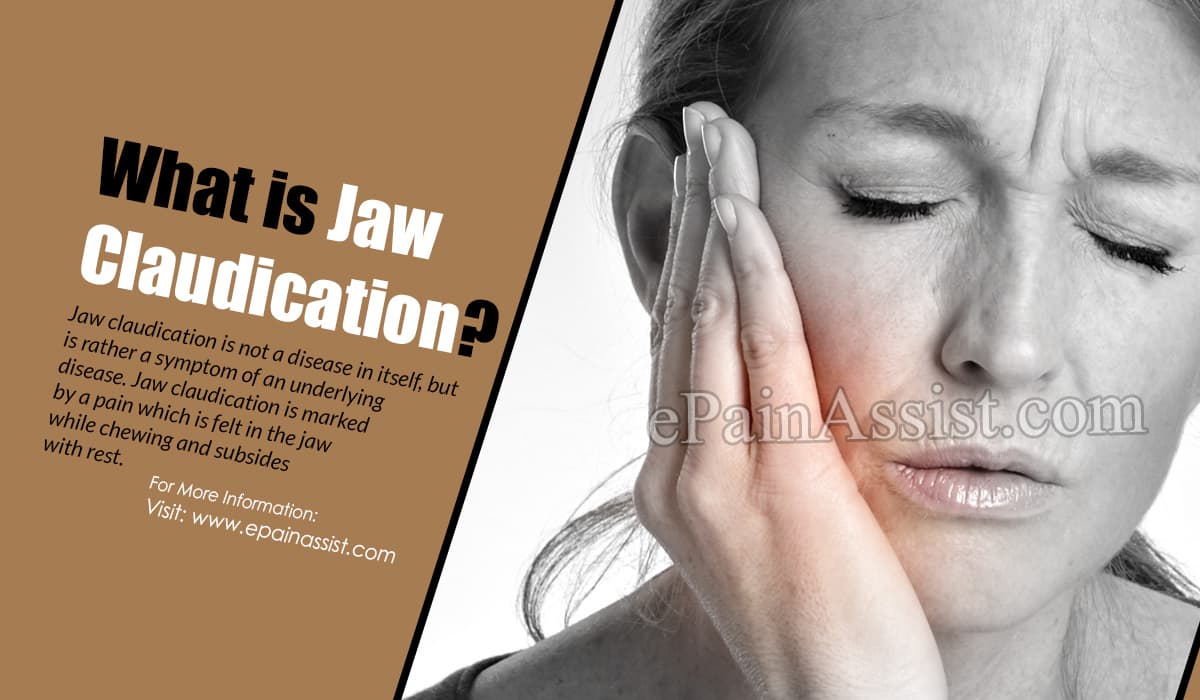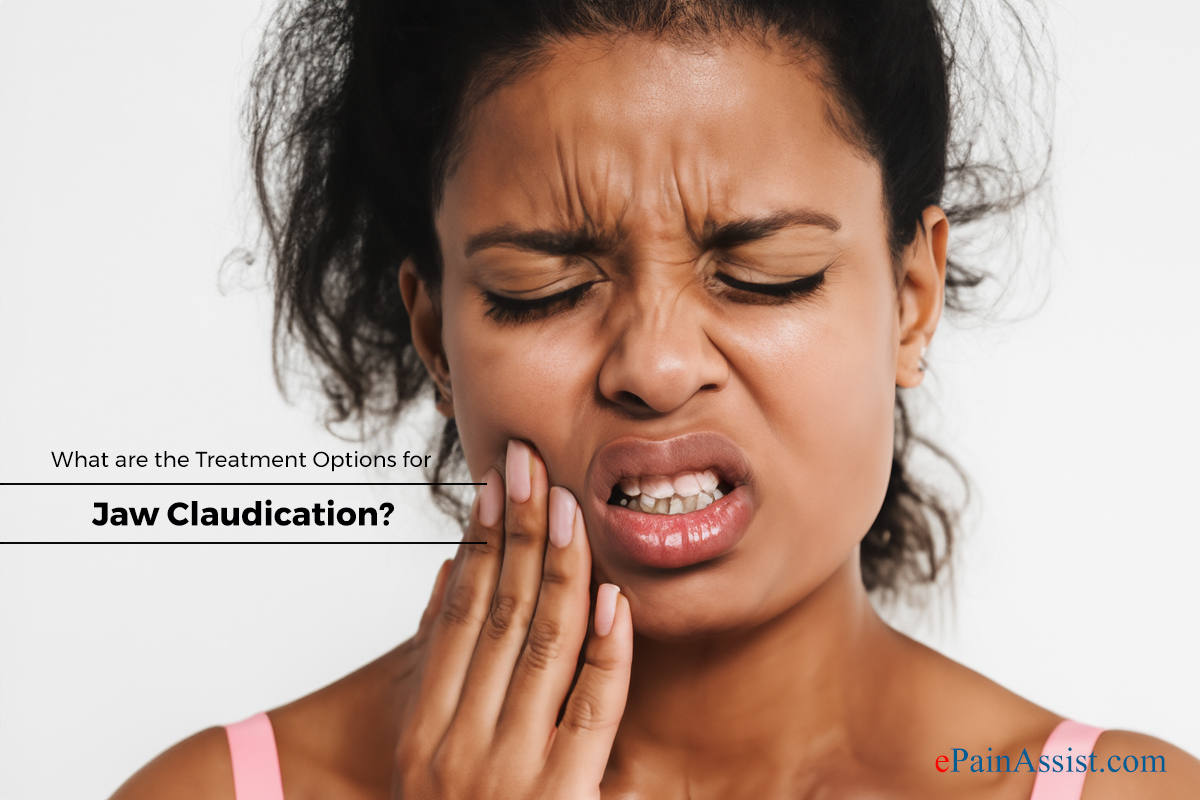What is Jaw Claudication?
Claudication is a medical terminology for the condition in which pain is induced in particular muscle areas of the body. Claudication is caused due to an arterial obstruction. Pain decreases once the physical activity of that part is stopped. Claudication mostly occurs as a result of arterial blockage or occlusion. Jaw claudication is not a disease in itself, but is rather a symptom of an underlying disease. Jaw claudication is marked by a pain which is felt in the jaw while chewing and subsides with rest. This jaw pain can be moderate to severe in intensity, and can sometimes radiate to the ears. In claudication of jaw, carotid artery is occluded. Carotid arteries are main arteries, which are responsible for carrying oxygenated blood from aorta to the brain and face. Claudication of jaw is a specific symptom of giant cell arteritis. When one experiences sudden severe pain on chewing, which reduces with rest, the sufferer should consult their doctor to rule out the possibility of jaw claudication. However, claudication of jaw is a treatable condition. Read on to know about 7 Causes of Jaw Claudication and 6 Treatment Options to Consider.

What are the Causes of Jaw Claudication?
Jaw claudication is not a disease itself, but a symptom of an underlying health issue. There are many conditions that can cause jaw claudication. Jaw claudication is characterised by decreased blood supply to the muscles of jaw because of narrowing or occlusion of the arteries which supply blood to the jaw. Occlusion mainly happens in carotid artery or its branches. Some of the main causes for painful jaw claudication are:
- Jaw Claudication caused due to Giant Cell Arteritis. This is a chronic inflammatory autoimmune disease of artery, in which giant monocyte cells infiltrate medium and large sized arteries, mainly carotid arteries, to trigger a systemic inflammation. Common symptoms of giant cell arteritis are jaw claudication, headache, low pulse rate, and mild fever. This condition mostly affects people aged above 50 years.
- Jaw Claudication caused by Myasthenia Gravis. Myasthenia gravis is a neuromuscular disease caused due to dysfunction of the immune system. Patients of myasthenia gravis suffer from reduced jaw strength and fatigue which causes jaw claudication.
- Temporo-Mandibular Joint Disorder (TMJ) causing Jaw Claudication. TMJ usually occurs because of temporal arteritis and is marked by pain and inflammation in the temporal branch of the artery. The maxillary artery becomes swollen, decreasing the oxygen supply to the muscles of jaw resulting in jaw claudication.
- Jaw Claudication caused due to Infections. Bacterial and viral infections can produce jaw pain, especially in patients suffering from sinusitis. The jaw pain or claudication pain increases with chewing and subsides with rest.
- Jaw Claudication caused by Carotid Artery Stenosis. Jaw claudication can result from occlusion of external carotid artery from emboli.
- Jaw Claudication caused by Rheumatoid Arthritis. RA is an autoimmune disease, which affects the joint and other organs of the body. Jaw claudication is one of the many symptoms of Rheumatoid Arthritis.
Jaw Claudication caused by Parotid Gland Tumor. Tumor present in the salivary gland can disturb the flow of blood to the jaw muscles and cause jaw pain while chewing food.

What are the Treatment Options for Jaw Claudication?
- Treatment of jaw claudication depends on the underlying cause. So, the aim of the jaw claudication management technique is to treat the underlying disease that is causing jaw claudication. Depending on the underlying cause, given below are 6 treatment options for jaw claudication:
- When jaw claudication is caused by autoimmune diseases like giant cell arteritis, temporal arteritis, or rheumatoid arthritis, the doctors usually use to treat these underlying conditions. Since the long term use of steroids can weaken the bones, supplementary calcium and vitamin D can be prescribed to the patient from time to time to treat jaw claudication and its causes.
- Patients suffering from myasthenia gravis can be treated with medications like immune-suppressants and cholinesterase inhibitors, which will help manage jaw claudication.
- Blood thinning medicines may also need to be administered to the patient for allowing the blood to adequately reach the jaw muscles and reduce jaw claudication.
- Jaw claudication caused by parotid tumor can be treated by surgically removing the tumor. The patient may also need to undergo chemotherapy and radiation later as a part of treatment of the tumor which will give relief to jaw claudication.
- In case of narrowing of the carotid artery, carotid endarterectomy surgery may need to be performed to increase the flow of blood to the jaw muscles and thus treat jaw claudication.
Antibiotics are used to treat bacterial sinusitis infection which is causing jaw claudication to provide relief from jaw claudication.
Also Read:
